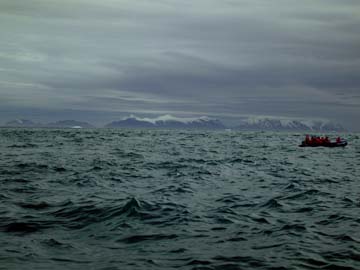
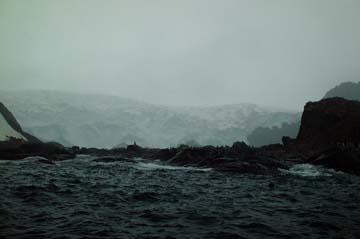
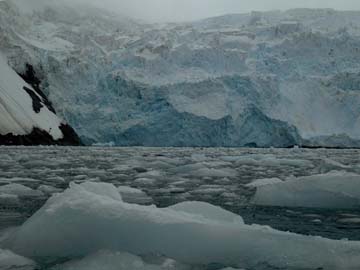
Our first stop on our way to Antarctica was Point Wild, Elephant Island. The seas were rough and it was beginning to snow.
This was the site where 22 men from Shackleton's expedition waited while he navigated 700+ miles in a lifeboat in winter to bring back help. Amazingly, every man survived.
This glacier drops into the sea near Point Wild. It has greatly retreated since the time Shackleton was there in 1916.
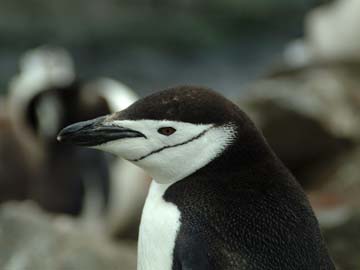
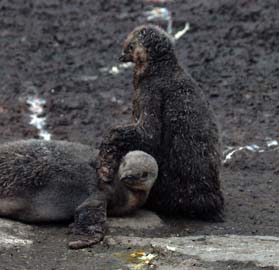
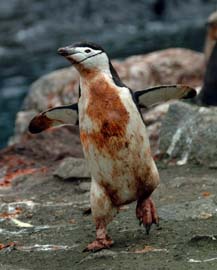
We were able to land at Cape Lookout on the other side of Elephant Island and visited our first Chinstrap Penguin rookery.
The Chinstrap chicks are often born in pairs. Here's a display of brotherly affection.
Chinstraps aren't the most cleanly of birds. That's not blood, it's the red from the shells of digested krill (a shrimp-like animal plentiful in the Antarctic seas) that the adults feed their chicks.
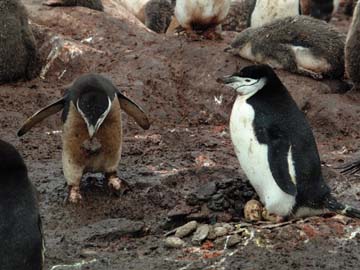
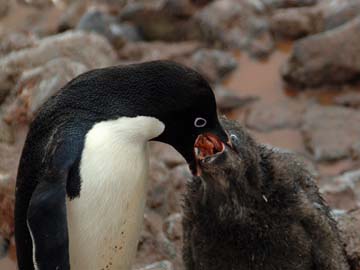
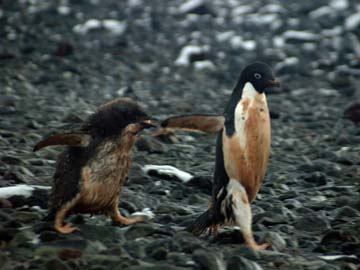
A male Chinstrap Penguin tries to impress his mate by bringing the best stone he can find to build the nest. Sometimes they'll steal stones from neighbors.
Gross!!! The adult penguins feed their chicks by regurgitating partially digested krill..
To ensure unrelated chicks don't get a free meal, an adult make the chick chase him until he can be sure the chick is his child. When out of food, the adults will escape chicks by running into the ocean.
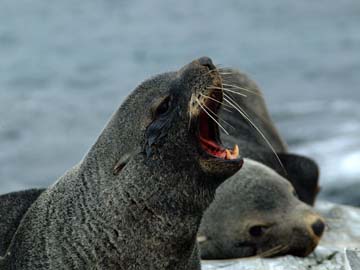
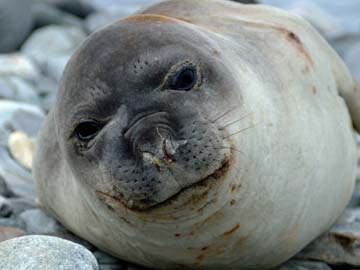
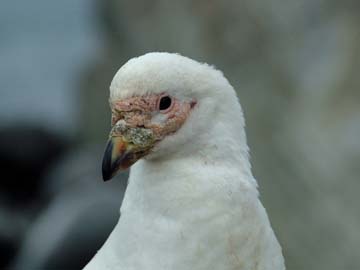
Fur Seals were called "Sea Bears" by the early explorers. It turns out they were right, they are more closely related to bears than other seals.
This Elephant Seal was snoozing in the middle of our landing area at Cape Lookout. Occasionally she would open her eyes to check us out.
Snowy Sheathbills are the local garbage collectors--they'll eat anything left over.

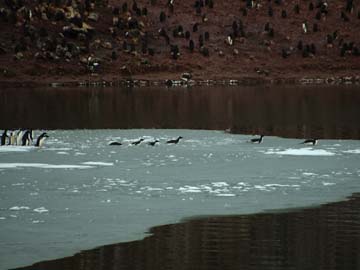
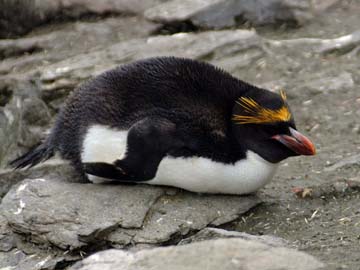
Our next landing was on Paulet Island, site of another unexpected Antarctic wintering. This rock hut was constructed by men waiting to be rescued.
Paulet Island is a volcano, which was active in the last 1000 years. This vent was filled with fresh water, and the penguins use it to teach their young to swim.
We saw a few Macaroni Penguins. They are so named after members of London's "Macaroni Club," men who liked to wear decorative feathers on their heads. That's right, "stuck a feather in his cap and called it macaroni."